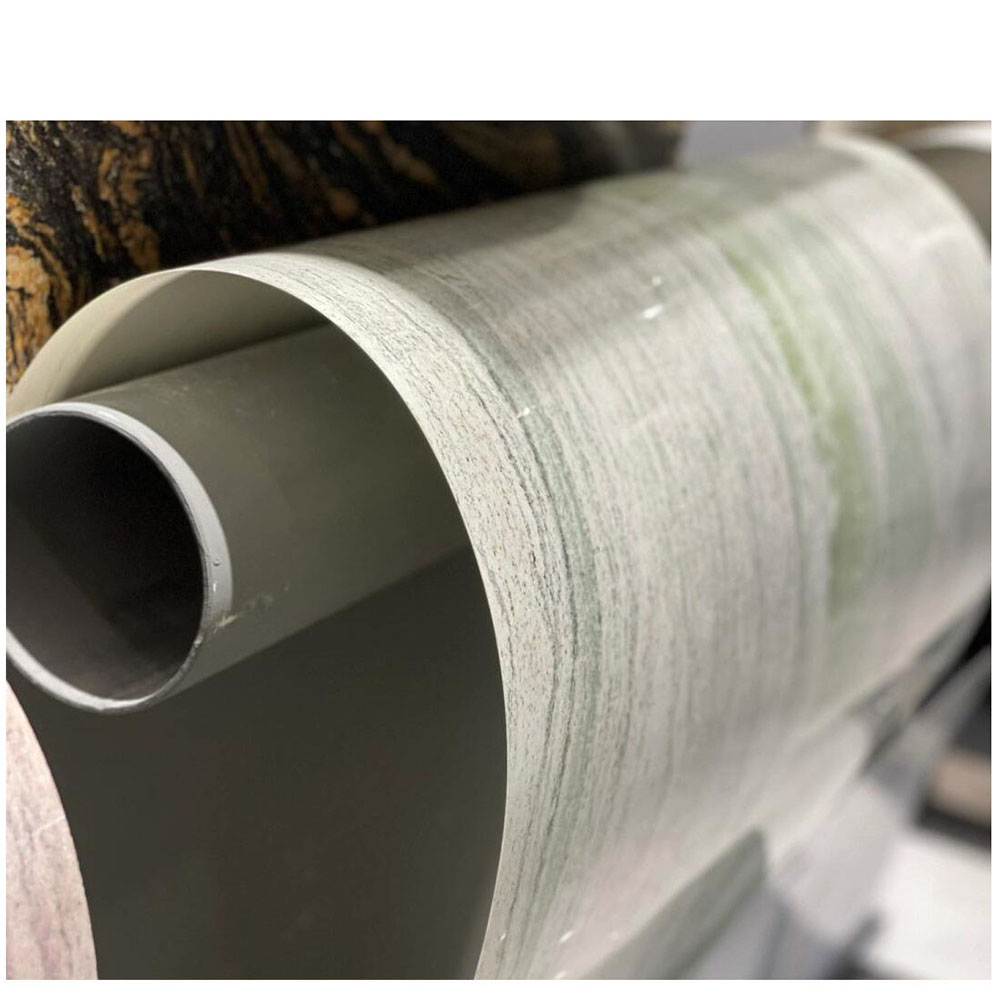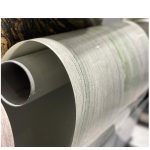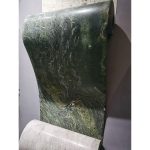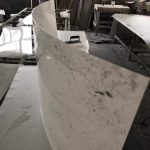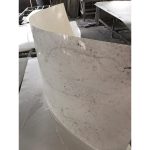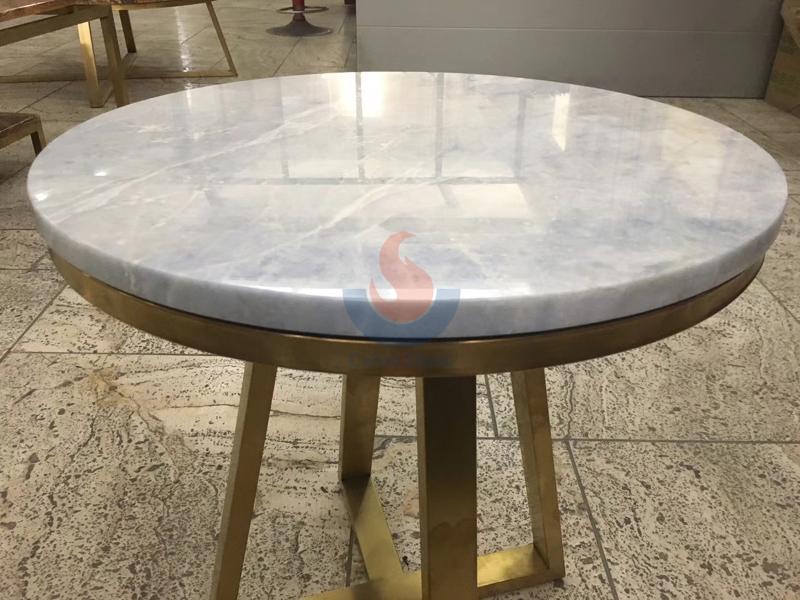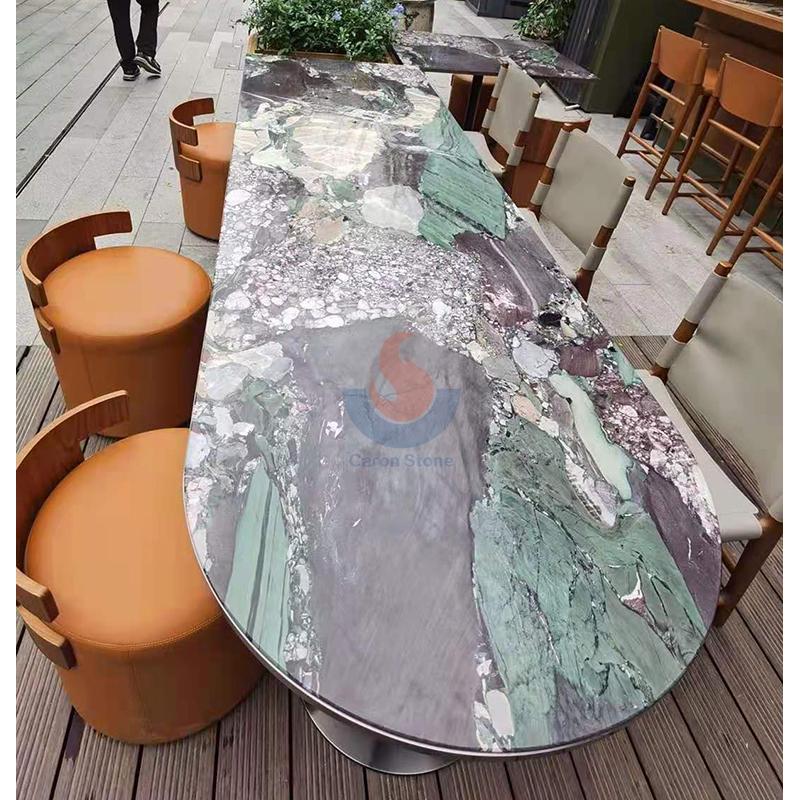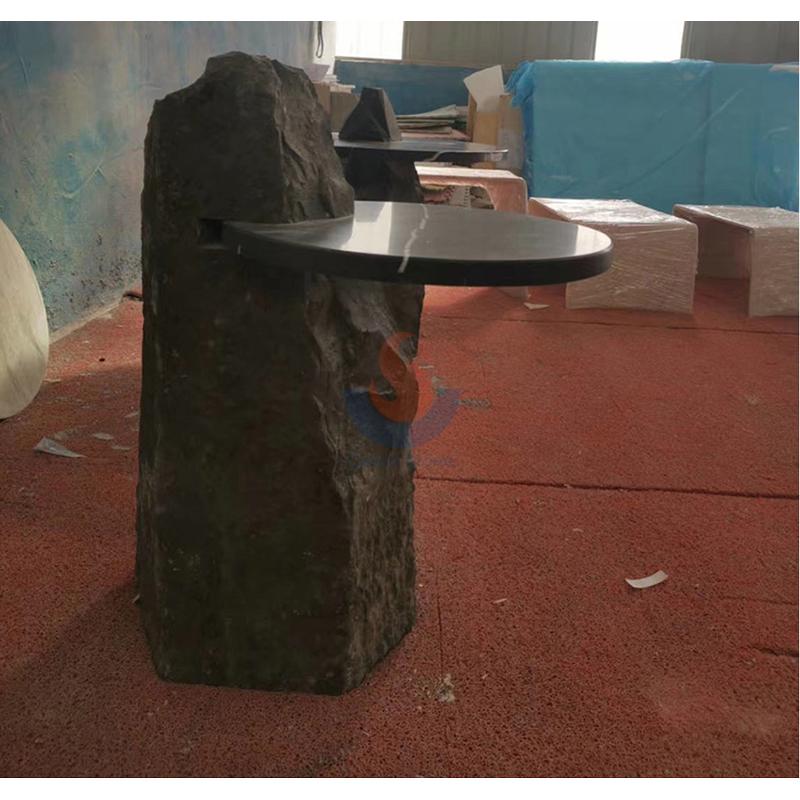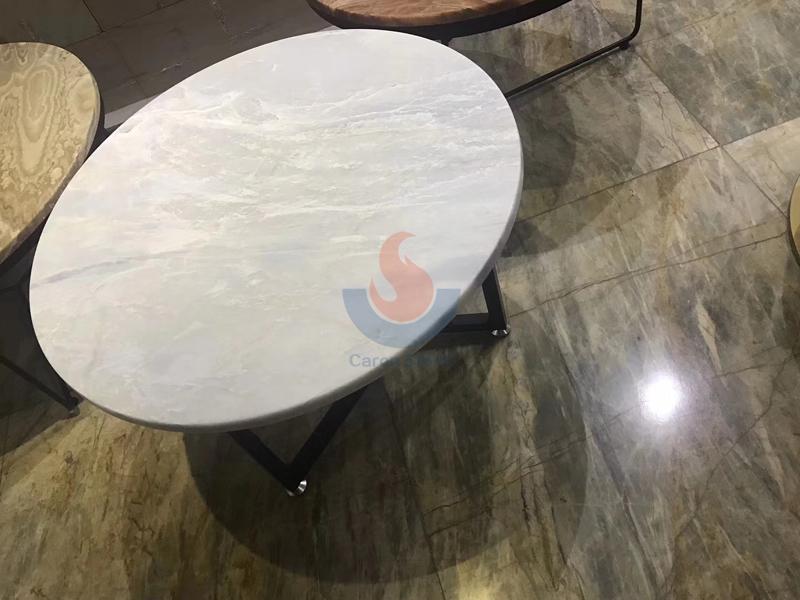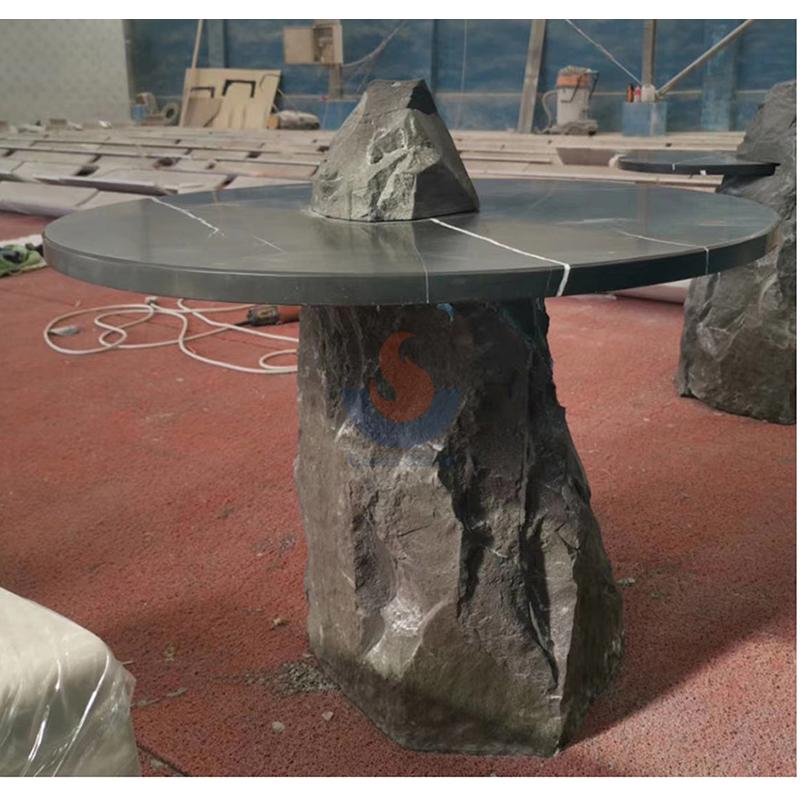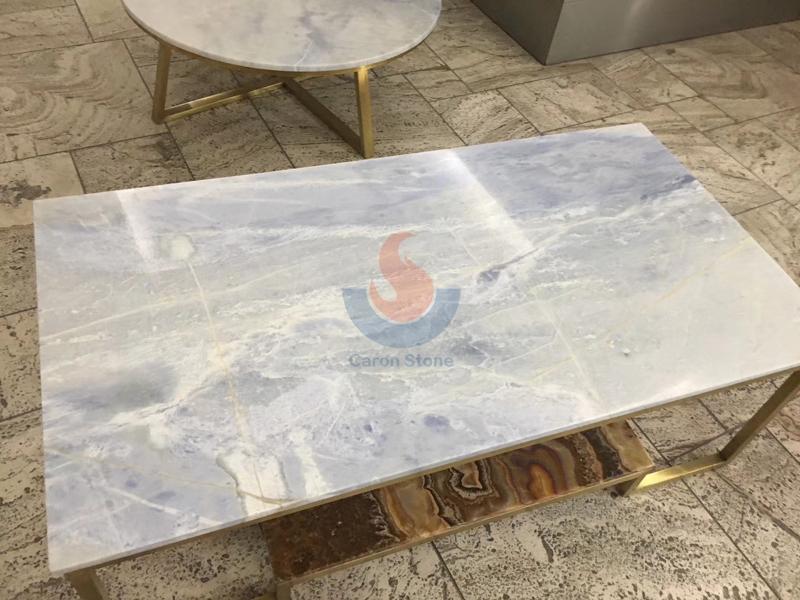» White Marble Ultra thin stone panel
Ultra-thin stone panels come in various thicknesses, including 1mm, 5mm, and 8mm, and are backed with different materials such as polyvinyl, aluminum, and fiberglass. These panels offer a range of applications in architecture and interior design, combining the natural beauty of stone with the practical benefits of modern materials. Here’s an overview of these ultra-thin stone panels:
Thickness Options:
1mm Thickness:
These panels are extremely thin and lightweight, making them ideal for applications where weight is a critical factor.
They are often used in high-end applications such as luxury watches, jewelry, and other fashion accessories where a thin profile is necessary.
In architectural applications, 1mm thick panels might be used for cladding in areas where the substrate can provide the necessary support.
5mm Thickness:
A 5mm thick panel offers a balance between the thinness of 1mm panels and the sturdiness of 8mm panels.
This thickness is suitable for both interior and exterior applications, including wall cladding, backsplashes, and flooring in residential and commercial spaces.
The 5mm thickness provides enough rigidity to handle light foot traffic and is easier to install compared to thicker stone slabs.
8mm Thickness:
An 8mm thick panel is more robust and durable, offering similar performance to traditional stone tiles but with reduced weight.
These panels are suitable for flooring, wall cladding, and other areas that require a more substantial material to withstand regular use and wear.
The 8mm thickness is often preferred for its durability and ability to mimic the look and feel of full-depth stone.
Backing Materials:
Polyvinyl (PVC):
PVC-backed panels are known for their water resistance and durability, making them suitable for wet areas like bathrooms and kitchens.
The plastic backing also adds a layer of insulation, which can be beneficial in terms of energy efficiency.
Aluminum:
Aluminum-backed panels are lightweight and strong, providing excellent support for the stone veneer.
They are often used in exterior applications due to their resistance to weathering and corrosion.
The aluminum backing can also be beneficial for sound insulation and can contribute to the overall structural integrity of the panel.
Fiberglass:
Fiberglass-backed panels are known for their flexibility and resistance to impact, making them suitable for curved surfaces and areas prone to physical stress.
The fiberglass backing can also provide additional strength and stability to the panel, especially in larger formats.
Ultra-thin stone panels with these backing materials offer a versatile and elegant solution for various design and construction needs, combining the beauty of natural stone with the practical advantages of reduced weight and ease of installation.
Ultra-thin stone panels, available in thicknesses of 1mm, 5mm, and 8mm, offer a modern alternative to traditional tiles。These panels are backed with materials such as polyvinyl, aluminum, or fiberglass to enhance their structural integrity and versatility。
Compared to traditional tiles, ultra-thin stone panels have several advantages:
Lightweight: They are significantly lighter than traditional stone slabs, making them easier to transport, install, and work with。
Ease of Installation: These panels can often be cut with standard tools, allowing for more flexible design options and modifications on-site。
Enhanced Versatility: The lightweight nature of this stone enables its use in a wider range of applications, including those where traditional stone would be too cumbersome or heavy。
Environmental Benefits: Using lightweight stone can contribute to sustainable building practices. The manufacturing process often uses less energy, and the reduced transportation weight lowers carbon emissions。
Cost-Effectiveness: Ultra-thin stone panels can be more cost-effective due to their lighter weight and easier installation process, reducing both material and labor costs。
However, traditional tiles also have their own set of advantages, such as:
Durability: Traditional stone tiles are known for their longevity and ability to withstand harsh weather conditions。
Authenticity: Nothing can fully replicate the unique variations and organic beauty found within each piece of natural stone。
In summary, ultra-thin stone panels provide a lightweight, cost-effective, and versatile option for both interior and exterior applications, while traditional tiles offer a more authentic and durable choice.





